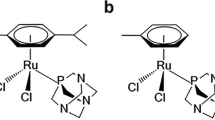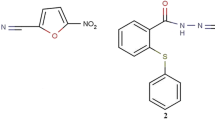Abstract
The search for anticancer drugs has led researchers to study salinomycin, an ionophore antibiotic that selectively destroys cancer stem cells. In this study, salinomycin was assessed in two human cell lines, a breast adenocarcinoma (MCF-7) and a non-tumor breast cell line (HB4a), to verify its selective action against tumor cells. Real-time assessment of cell proliferation showed that HB4a cells are more resistant to salinomycin than MCF-7 tumor cell line, and these data were confirmed in a cytotoxicity assay. The half maximal inhibitory concentration (IC50) values show the increased sensitivity of MCF-7 cells to salinomycin. In the comet assay, only MCF-7 cells showed the induction of DNA damage. Flow cytometric analysis showed that cell death by apoptosis/necrosis was only induced in the MCF-7 cells. The increased expression of GADD45A and CDKN1A genes was observed in all cell lines. Decreased expression of CCNA2 and CCNB1 genes occurred only in tumor cells, suggesting G2/M cell cycle arrest. Consequently, cell death was activated in tumor cells through strong inhibition of the antiapoptotic genes BCL-2, BCL-XL, and BIRC5 genes in MCF-7 cells. These data demonstrate the selectivity of salinomycin in killing human mammary tumor cells. The cell death observed only in MCF-7 tumor cells was confirmed by gene expression analysis, where there was downregulation of antiapoptotic genes. These data contribute to clarifying the mechanism of action of salinomycin as a promising antitumor drug and, for the first time, we observed the higher resistance of HB4a non-tumor breast cells to salinomycin.









Similar content being viewed by others
References
Al Dhaheri Y, Attoub S, Arafat K, Abuqamar S, Eid A, Al Faresi N, et al. (2013) Salinomycin induces apoptosis and senescence in breast cancer: upregulation of p 21, downregulation of survivin and histone h3 and h4 hyperacetylation. Biochim Biophys Acta 1830:3121–3135
Arafat K, Iratni R, Takahashi T, Parekh K, Al Dhaheri Y, Adrian TE, et al. (2013) Inhibitory effects of salinomycin on cell survival, colony growth, migration, and invasion of human non-small cell lung cancer a549 and lnm35: involvement of nag-1. PLoS one 8:e66931
Boehmerle W, Endres M (2011) Salinomycin induces calpain and cytochrome c-mediated neuronal cell death. Cell Death Dis 2:e168
Callaway TR, Edrington TS, Rychlik JL, Genovese KJ, Poole TL, Jung YS, et al. (2003) Ionophores: their use as ruminant growth promotants and impact on food safety. Curr Issues Intest Microbiol 4:43–51
Chari RV (2008) Targeted cancer therapy: conferring specificity to cytotoxic drugs. Acc Chem Res 41:98–107
Chazotte B (2011) Labeling nuclear DNA with hoechst 33342. Cold Spring Harbor protocols 2011:pdb.prot5557.
Eyler CE, Rich JN (2008) Survival of the fittest: cancer stem cells in therapeutic resistance and angiogenesis. J Clin Oncol 26:2839–2845
Fuchs D, Daniel V, Sadeghi M, Opelz G, Naujokat C (2010) Salinomycin overcomes Abc transporter-mediated multidrug and apoptosis resistance in human leukemia stem cell-like kg-1a cells. Biochem Biophys Res Commun 394:1098–1104
Fuchs D, Heinold A, Opelz G, Daniel V, Naujokat C (2009) Salinomycin induces apoptosis and overcomes apoptosis resistance in human cancer cells. Biochem Biophys Res Commun 390:743–749
Griffiths GL, Hillier P, Sutherland RJ (1989) Salinomycin poisoning in point-of-lay turkeys. Aust Vet J 66:326–329
Gupta PB, Onder TT, Jiang G, Tao K, Kuperwasser C, Weinberg RA, et al. (2009) Identification of selective inhibitors of cancer stem cells by high-throughput screening. Cell 138:645–659
He L, Wang F, Dai WQ, Wu D, Lin CL, Wu SM, et al. (2013) Mechanism of action of salinomycin on growth and migration in pancreatic cancer cell lines. Pancreatol 13:72–78
Huang YH, Shang BY, Zhen YS (2005) Antitumor efficacy of lidamycin on hepatoma and active moiety of its molecule. World J Gastroentero 11:3980–3984
Ivanova J, Pantcheva IN, Mitewa M, Simova S, Tanabe M, Osakada K (2011) Cd(ii) and pb(ii) complexes of the polyether ionophorous antibiotic salinomycin. Chem Central J 5:52
Jangamreddy JR, Ghavami S, Grabarek J, Kratz G, Wiechec E, Fredriksson BA, et al. (2013) Salinomycin induces activation of autophagy, mitophagy and affects mitochondrial polarity: differences between primary and cancer cells. Biochim Biophy Acta 1833:2057–2069
Janicke RU (2009) Mcf-7 breast carcinoma cells do not express caspase-3. Breast Cancer Res Tr 117:219–221
Kavanagh NT, Sparrow D (1990) Salinomycin toxicity in pigs. Vet Rec 127:507
Ketola K, Hilvo M, Hyotylainen T, Vuoristo A, Ruskeepaa AL, Oresic M, et al. (2012) Salinomycin inhibits prostate cancer growth and migration via induction of oxidative stress. Br J Cancer 106:99–106
Kim JH, Choi AR, Kim YK, Kim HS, Yoon S (2013) Low amount of salinomycin greatly increases akt activation, but reduces activated p70s6k levels. Int J Mol Sci 14:17304–17318
Kim JH, Kim TY, Kim HS, Hong S, Yoon S (2012) Lower salinomycin concentration increases apoptotic detachment in high-density cancer cells. Int J Mol Sci 13:13169–13182
Kim KY, Yu SN, Lee SY, Chun SS, Choi YL, Park YM, et al. (2011) Salinomycin-induced apoptosis of human prostate cancer cells due to accumulated reactive oxygen species and mitochondrial membrane depolarization. Biochem Biophys Res Commun 413:80–86
Koo KH, Kim H, Bae YK, Kim K, Park BK, Lee CH, et al. (2013) Salinomycin induces cell death via inactivation of stat3 and downregulation of skp2. Cell Death Dis 4:e693
Kusunoki S, Kato K, Tabu K, Inagaki T, Okabe H, Kaneda H, et al. (2013) The inhibitory effect of salinomycin on the proliferation, migration and invasion of human endometrial cancer stem-like cells. Gynecol Oncol 129:598–605
Lee HG, Lee JM, Shin SJ, Kwon SH, Lee GS, Song CH, et al. (2014) Salinomycin inhibited cell proliferation and induced apoptosis in human uterine leiomyoma cells. Obstet Gynecol Sci 57:501–506
Li T, Su L, Zhong N, Hao X, Zhong D, Singhal S, et al. (2013) Salinomycin induces cell death with autophagy through activation of endoplasmic reticulum stress in human cancer cells. Autophagy 9:1057–1068
Li Y, Fang J, Wu S, Ma K, Li H, Yan X, et al. (2010) Identification and quantification of salinomycin in intoxicated human plasma by liquid chromatography-electrospray tandem mass spectrometry. Anal Bioanal Chem 398:955–961
Liebermann DA, Hoffman B (2008) Gadd45 in stress signaling. J Mol Signal 3:15
Maheshwari A, Misro MM, Aggarwal A, Sharma RK, Nandan D (2011) N-acetyl-l-cysteine counteracts oxidative stress and prevents h2o2 induced germ cell apoptosis through down-regulation of caspase-9 and jnk/c-jun. Mol Reprod Dev 78:69–79
Martinez-Serra J, Gutierrez A, Munoz-Capo S, Navarro-Palou M, Ros T, Amat JC, et al. (2014) Xcelligence system for real-time label-free monitoring of growth and viability of cell lines from hematological malignancies. OncoTargets Ther 7:985–994
Medema RH, Klompmaker R, Smits VA, Rijksen G (1998) P21waf1 can block cells at two points in the cell cycle, but does not interfere with processive DNA-replication or stress-activated kinases. Oncogene 16:431–441
Miyazaki Y, Shibuya M, Sugawara H, Kawaguchi O, Hirsoe C (1974) Salinomycin, a new polyether antibiotic. J Antibiot 27:814–821
Mosmann T (1983) Rapid colorimetric assay for cellular growth and survival: application to proliferation and cytotoxicity assays. J Immun Methods 65:55–63
Omidi A, Aslani MR, Movassaghi AR, Mohri M, Dadfar M (2010) Accidental salinomycin intoxication in calves. Can Vet J 51:1143–1145
Pfaffl MW (2001) A new mathematical model for relative quantification in real-time rt-pcr. Nucleic Acids Res 29:e45
Pfaffl MW, Horgan GW, Dempfle L (2002) Relative expression software tool (rest) for group-wise comparison and statistical analysis of relative expression results in real-time pcr. Nucleic Acids Res 30:e36
Rollinson J, Taylor FG, Chesney J (1987) Salinomycin poisoning in horses. Vet Rec 121:126–128
Roshan Moniri M, Young A, Reinheimer K, Rayat J, Dai LJ, Warnock GL (2015) Dynamic assessment of cell viability, proliferation and migration using real time cell analyzer system (rtca). Cytotechnology 67:379–386
Savio AL, da Silva GN, de Camargo EA, Salvadori DM (2014) Cell cycle kinetics, apoptosis rates, DNA damage and tp53 gene expression in bladder cancer cells treated with allyl isothiocyanate (mustard essential oil). Mutat Res-Fund Mol M 762:40–46
Steverding D, Sexton DW (2013) Trypanocidal activity of salinomycin is due to sodium influx followed by cell swelling. Parasite Vec 6:78
Story P, Doube A (2004) A case of human poisoning by salinomycin, an agricultural antibiotic. New Zeal Med J 117:U799
Tang QL, Zhao ZQ, Li JC, Liang Y, Yin JQ, Zou CY, et al. (2011) Salinomycin inhibits osteosarcoma by targeting its tumor stem cells. Cancer Lett 311:113–121
Tice RR, Agurell E, Anderson D, Burlinson B, Hartmann A, Kobayashi H, et al. (2000) Single cell gel/comet assay: guidelines for in vitro and in vivo genetic toxicology testing. Environ Mol Mutagen 35:206–221
van der Linde-Sipman JS, van den Ingh TS, JJ v n, Verhagen H, JG K, AC B, et al. (1999) Salinomycin-induced polyneuropathy in cats: morphologic and epidemiologic data. Vet Pathol 36:152–156
Wang F, He L, Dai WQ, Xu YP, Wu D, Lin CL, et al. (2012) Salinomycin inhibits proliferation and induces apoptosis of human hepatocellular carcinoma cells in vitro and in vivo. PLoS one 7:e50638
Wang XW, Zhan Q, Coursen JD, Khan MA, Kontny HU, Yu L, et al. (1999) Gadd45 induction of a g2/m cell cycle checkpoint. P Natl Acad Sci USA 96:3706–3711
Wu D, Zhang Y, Huang J, Fan Z, Shi F, Wang S (2014) Salinomycin inhibits proliferation and induces apoptosis of human nasopharyngeal carcinoma cell in vitro and suppresses tumor growth in vivo. Biochem Biophys Res Commun 443:712–717
Xu ZR, Hu L, Cheng LF, Qian Y, Yang YM (2010) Dihydrotestosterone protects human vascular endothelial cells from h(2)o(2)-induced apoptosis through inhibition of caspase-3, caspase-9 and p 38 mapk. Eur J Pharmacol 643:254–259
Zhan Q, Antinore MJ, Wang XW, Carrier F, Smith ML, Harris CC, et al. (1999) Association with cdc2 and inhibition of cdc2/cyclin b1 kinase activity by the p 53-regulated protein gadd45. Oncogene 18:2892–2900
Zhi QM, Chen XH, Ji J, Zhang JN, Li JF, Cai Q, et al. (2011) Salinomycin can effectively kill aldh(high) stem-like cells on gastric cancer. Biomed Pharmacother 65:509–515
Zhou J, Li P, Xue X, He S, Kuang Y, Zhao H, et al. (2013) Salinomycin induces apoptosis in cisplatin-resistant colorectal cancer cells by accumulation of reactive oxygen species. Toxicol Lett 222:139–145
Acknowledgments
This research was support by CNPq, CAPES, and Fundação Araucária, Brazil.
Author information
Authors and Affiliations
Corresponding author
Ethics declarations
Conflicts of interest
The authors declare no conflicts of interest.
Rights and permissions
About this article
Cite this article
Niwa, A.M., D′Epiro, G.F.R., Marques, L.A. et al. Salinomycin efficiency assessment in non-tumor (HB4a) and tumor (MCF-7) human breast cells. Naunyn-Schmiedeberg's Arch Pharmacol 389, 557–571 (2016). https://doi.org/10.1007/s00210-016-1225-7
Received:
Accepted:
Published:
Issue Date:
DOI: https://doi.org/10.1007/s00210-016-1225-7




